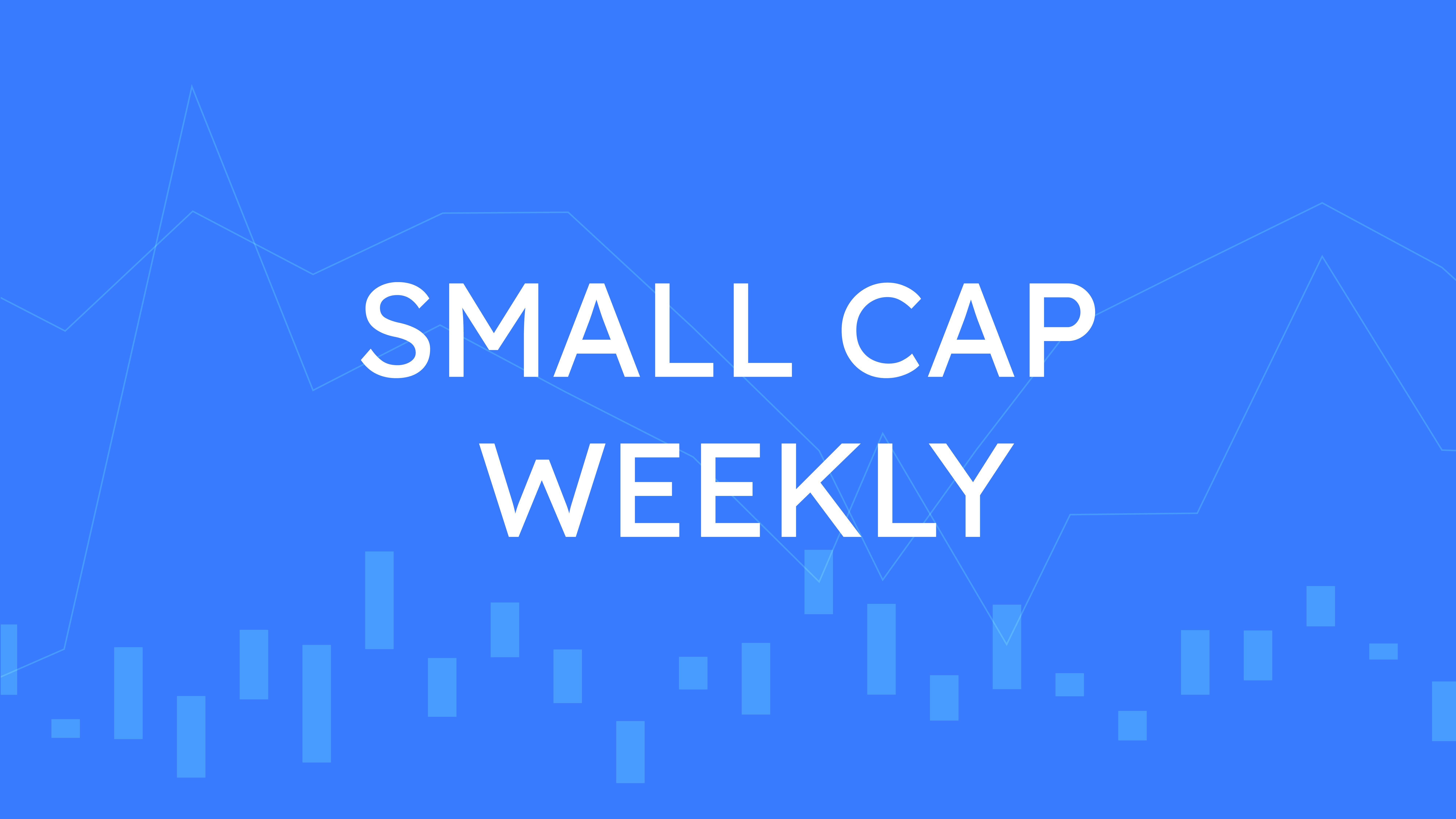
S&P Small Cap 600
The S&P Small Cap 600 is inching close to the edge of the cliff once again. The 1,260 level remains the key level for bulls to defend. Failure to do would put the bears in control of the trend as the price is already below the 50 and 200-day moving averages. The 14-day RSI is holding in a bearish regime, giving an advantage to the bulls.
On a relative basis, Small Caps are holding below the 50-day moving average after failing to break above the October/November peaks. The ratio is nearing the lows of the past year.
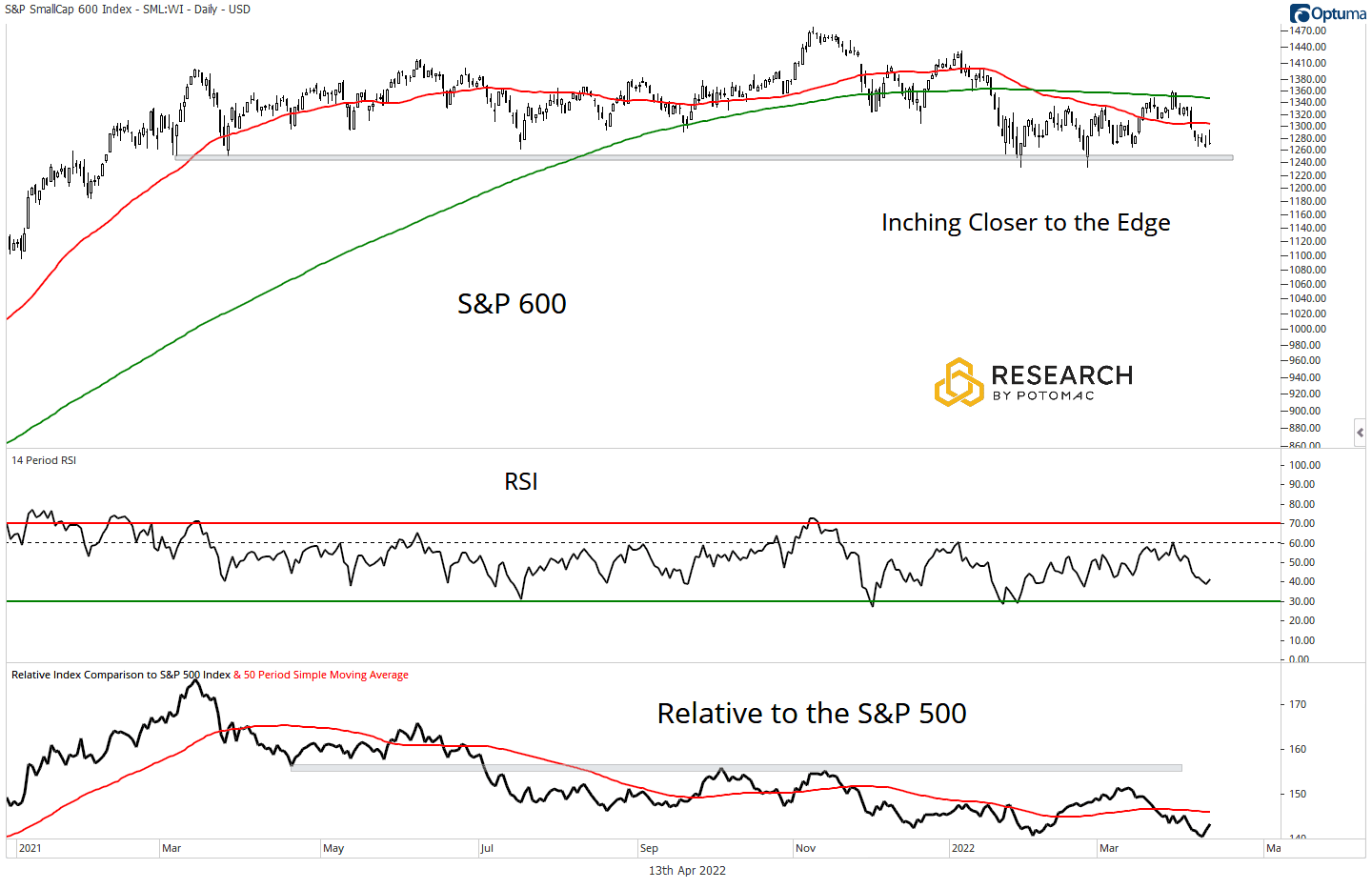
The leadership landscape within the Small Cap Universe remains unchanged, with Energy doing much of the heavy lifting; whole Material and Utilities are also ahead of the pack. Staples and Financials continue to trade in the weakening camp, but Financials are deteriorating faster than Staples. Discretionary and Technology are laggards. The improving group gained a new member this week, with Industrials making the shift that we called out last week to join Health Care.
- Leading (Opportunity): Energy, Materials, Utilities
- Weakening (Risk): Staples, Financials
- Improving (Opportunity): Health Care, Industrials (new)
- Lagging (Risk): Discretionary, Technology
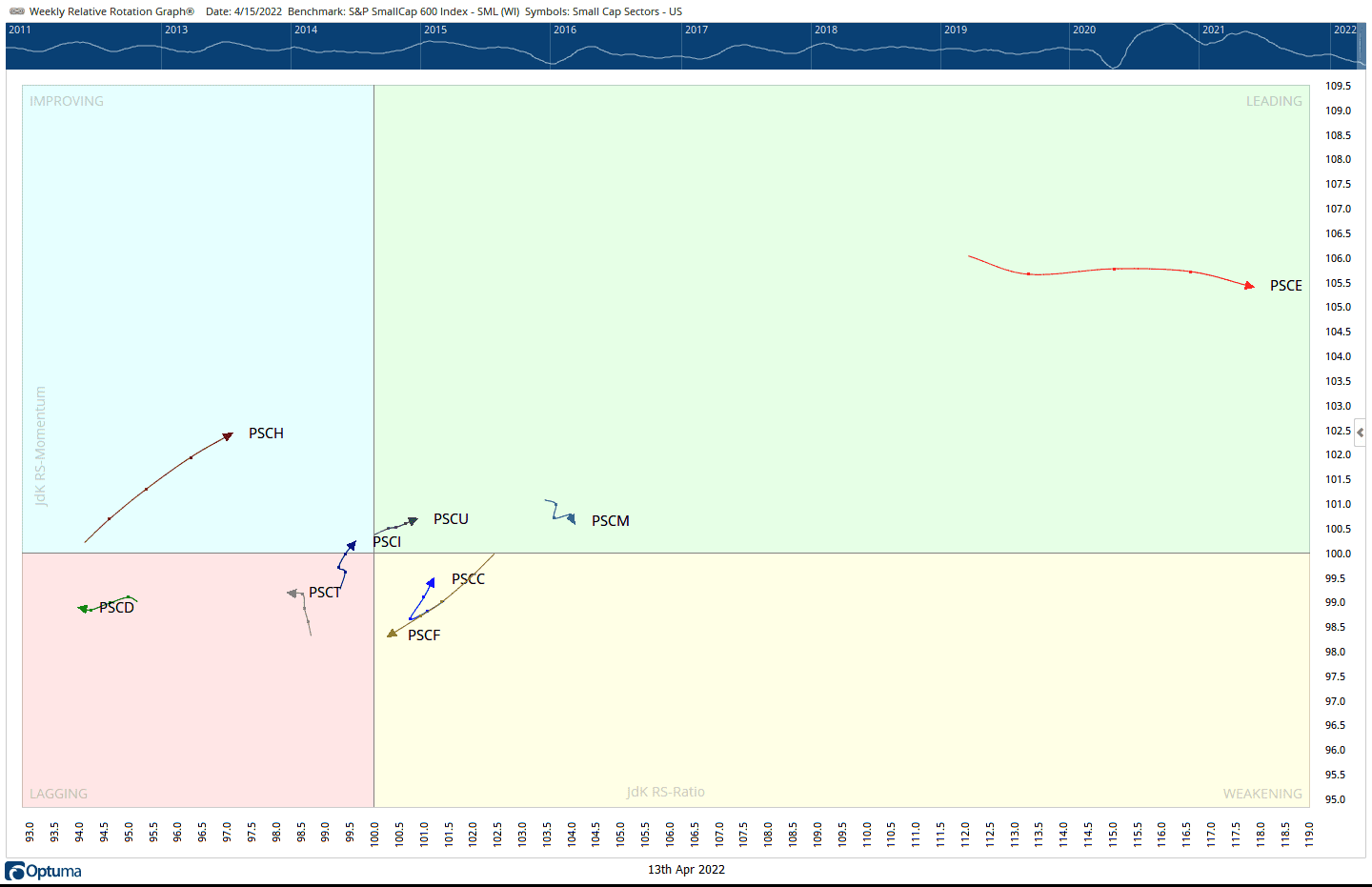
While the Industrials sector is moving to an improving position, it is important to remember that improving could simply mean “less bad.” That seems to be the case here as the Small Cap Industrials ETF (PSCI) is in a choppy trend below its 50 and 200-day moving averages. Support in the $86-$87 range is now being tested.
Relative to the S&P 600, the trend is still neutral (which appears to be enough to mark improvement). The ratio is below the 50-day moving average. We looked back to the other times when the group crossed into the improving quadrant. There have been 18 instances since 2011, and PSCI has gone on to outperform the S&P 600 58.82% of the time over the next six months of trading. However, we note that the path can be erratic (see the inset chart).
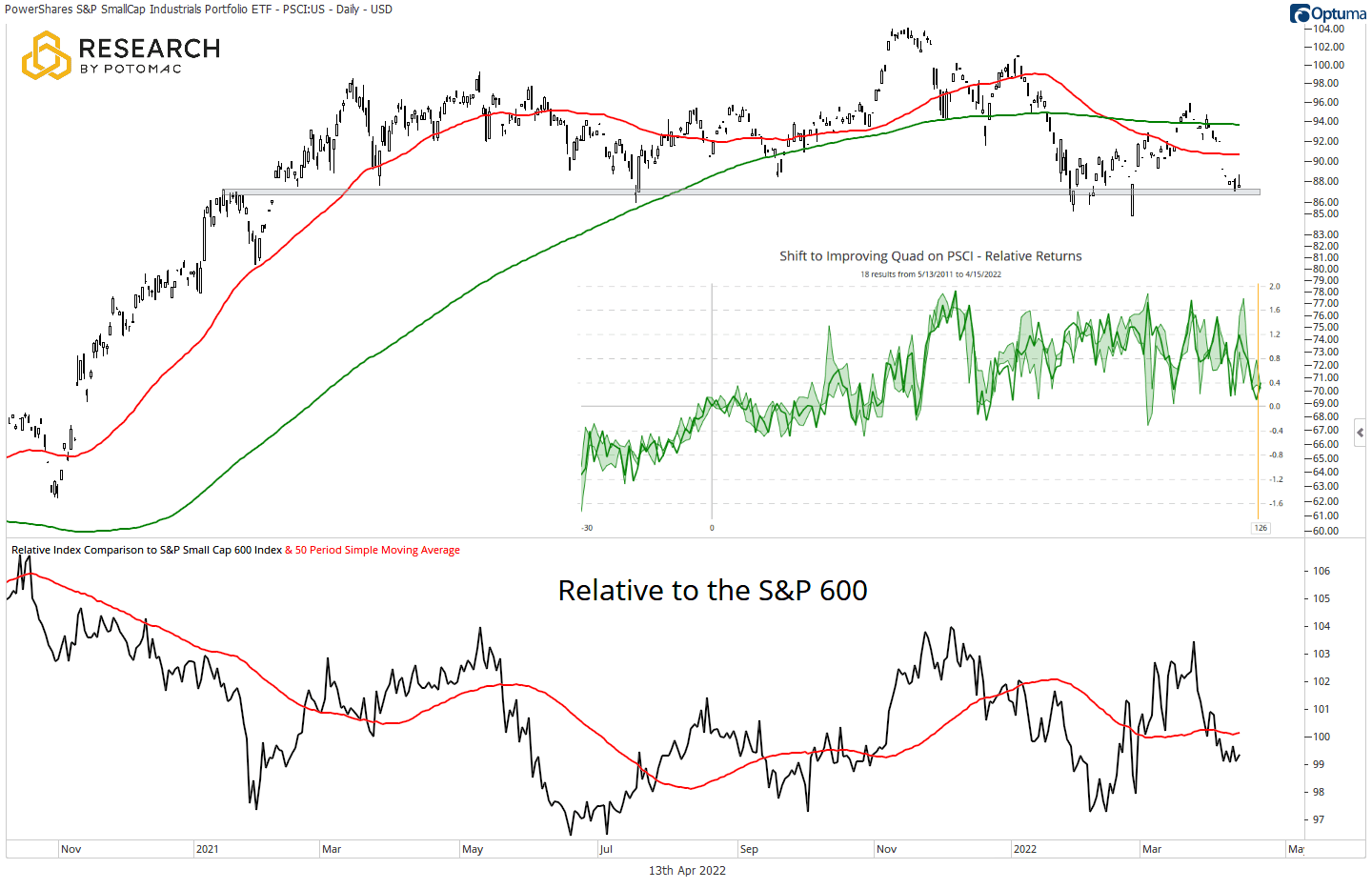
Breadth
Performance in the average stock in the S&P 600 has been a story that can only be viewed under the surface of the index. Both the percentage of S&P 600 components with a higher momentum (14-day RSI) reading and the percentage of components with a high positive correlation (rolling one-month correlation of > +0.75) have been suggesting increased dispersion and decoupling from the index, or an environment that’s commonly referred to as a “stock pickers market,” with readings above 50% and below 20% respectively. When this condition has been present, three-month sector performance dispersion has historically been wide, with the top gaining sector being Healthcare (PSCH) with a median three-month gain of 5.54% with a 69.53%-win rate, and the bottom losing sector being Energy (PSCE) with a median three-month loss of -5.32% and was lower 62.72% of the time.
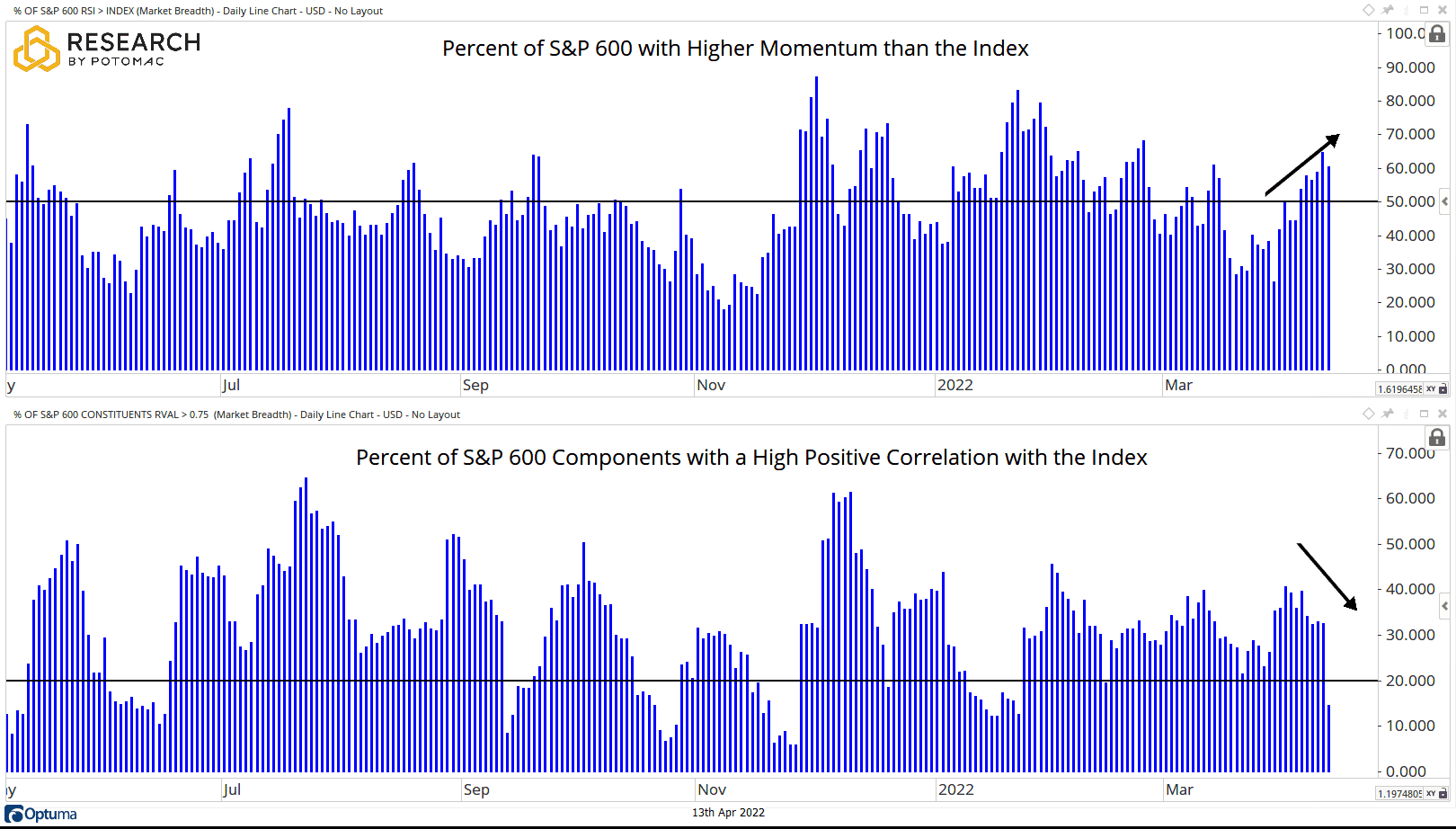

When this breadth condition was present, the top-performing Health Care stocks were: Flugent Genetics (FLGT) with a median gain of 17.76% with a 60.00%-win rate over the following quarter on a sample size of 95 since 2016 and Harmony Biosciences (HRMY) with a median gain of 10.63% with a 9000%-win rate over the following quarter on a sample size of 10 since 2020. While results have been attractive to HRMY, investors would be prudent to receive them with reduced enthusiasm due to the small sample size and limited history.
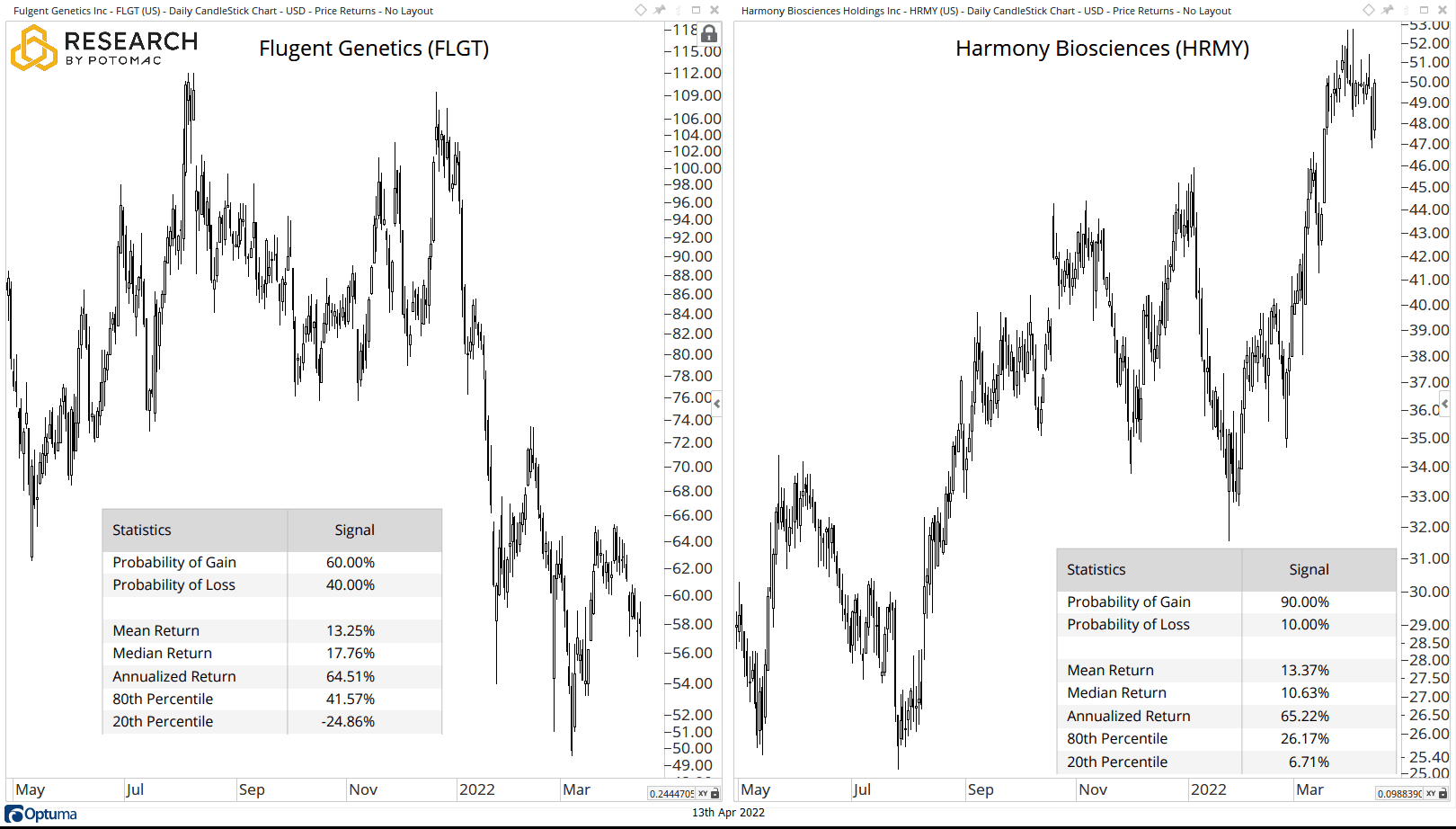
Disclosure: This information is prepared for general information only and should not be considered as individual investment advice nor as a solicitation to buy or offer to sell any securities. This material does not constitute any representation as to the suitability or appropriateness of any investment advisory program or security. Please visit our FULL DISCLOSURE page.
